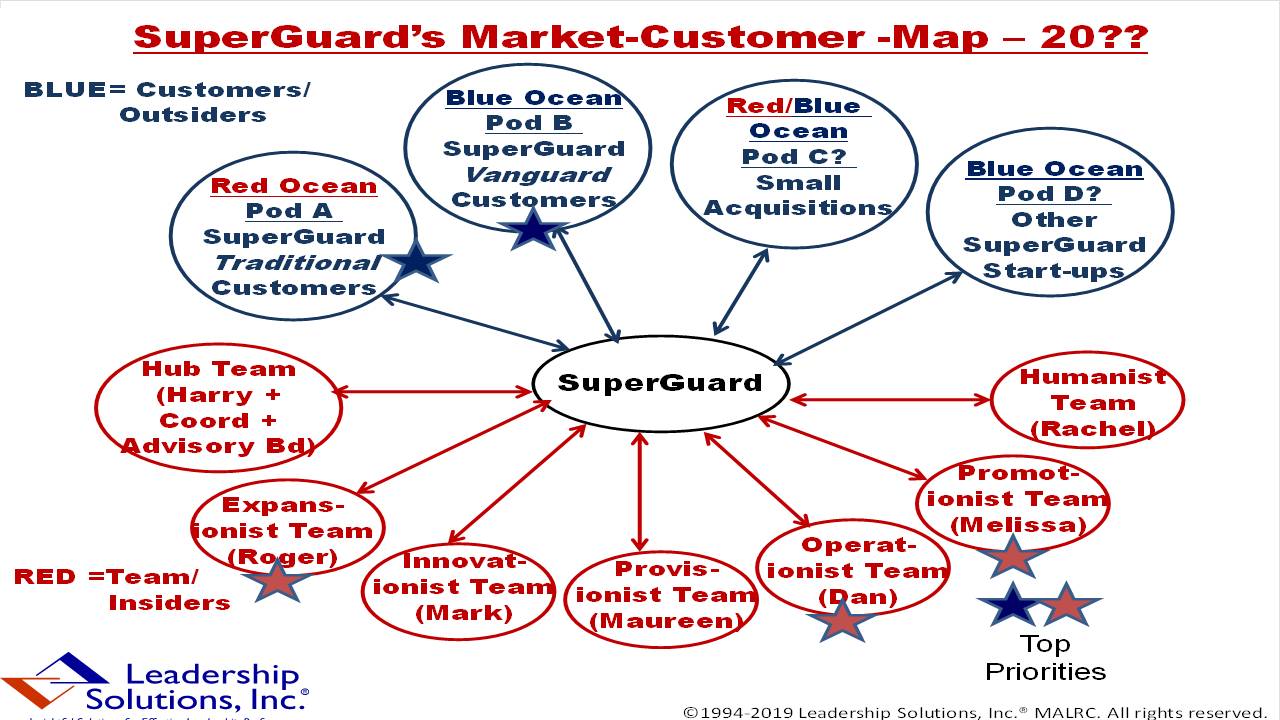by Peter A. Arthur-Smith
“Mapping and knowing how to engage your external and internal constituents is key to success.”

Harry and Melissa agreed with Christine, the day after their day-long Strategists’ Periscope Time session, on the absolute need to sustain and encourage momentum. Harry then polled the Strategist team on their next likely availability over the next ten days; including sharing his reasons for another early session. His consensus poll ended-up with Tuesday morning of the following week.
He subsequently emailed a short briefing paper outlining the intent and likely issues for them to think about during the meantime. He also pointed out his desire for them to sharpen their leadership clarity on who were SuperGuard’s external and internal constituents in order to fully engage those vital entities. Engagement occurs when you know who they are and the extent to which you effectively serve their direct or indirect, albeit realistic, interests.
When his Strategist team did gather again, it created the above pictograph – a map of the company’s external (blue) and internal (red) constituents. They’re arranged like this to emphasize the need for an “outside-in,” constituent focused venture. This also allows for regular two-way communication and therefore means optimally meeting customer and internal staff expectations. It was something to share with all their company staff, too.
In addition to the SuperGuard Traditional and Vanguard pods (A &B), you can also spot their future intent to make small, related acquisitions (Pod C) and establish further Blue Ocean start-ups (Pod D). These will happen in line with “internal” funding and leadership talent being available – rather than rushing to the bank or equity investors to fund such intentions. These latter alternatives should be among their last rather than first option. In the meantime, they would devote their energies and talents toward providing extraordinary service and support toward Pod A & B customers to aid generic expansion.
At this meeting moment, they decided to split into two sub-teams – Roger, Maureen and Melissa in one, and Mark, Dan and Rachel in the other. They would discuss how well SuperGuard was serving their Traditional and Vanguard customers. This was helped by a trove of documented customer feedback gleaned by Melissa’s sales team. Harry and Christine listened in on these two sub-team discussions over the next 45 minutes and offered objective input where appropriate. Do you sound out your staff on your customers’ perceptions?
When the two groupings re-convened to compare notes, both agreed that their current, trial-run Vanguard customers would be smiling with satisfaction and therefore provide great referrals. On the other hand, after some debate, they agreed that their Pod A Traditional customers would give SuperGuard an overall rating somewhere between a straight-face K and a smiling-faceJ. This sparked Dan, SuperGuard’s Operationist and interim Pod A Visionist, to agree on pulling his team leaders (TLs) together soonest for a series of In-Team Discovery sessions to determine how they can bridge the gap.
Such activities would encourage those TLs to pinpoint where Traditional’s pod teams were doing well and where they could do even better. (NOTE: They didn’t focus on what’s wrong, since that tends to switch people’s minds off or their levels of engagement – then they just tune-out.) By using self-discovery his team leaders would be much more committed to reinforce their strengths, and where they could do better; also to figure-out where progress should be made. This approach differs considerably from conventional management reporting, where beating the “what’s wrong” drum occurs…with relatively little emphasis on what’s done right.
By focusing more on what your people do right, it often encourages them to do even better across the board. Utilizing a strengths-progress approach – note the psychology of those strengths-based programs on the market – they can then pinpoint areas for additional team member or “pair” education and skill upgrades. Dan assured his Strategist colleagues that he would follow-through on a regular basis to ascertain progress and commitment until his Pod A team obtains a smiling-face. By doing so, his team would be much better placed as stand-outs in their “red ocean” marketplace and gain even more referrals.
Even though Roger’s Vanguard teams – through his interim Visionist Pod leadership – felt good about their customer smiling-faceJ; he agreed to hold regular progress meetings to encourage optimum customer attentiveness. That attentiveness had to occur without going overboard, so as to keep both SuperGuard and its customers’ expectations in balance. It also meant learning more about how to optimize Vanguard’s novel services when it came to future customer expansion. In particular, Roger should be vigilant about putting the right people in place and constantly, but constructively, bolstering individual and “pair” competence levels. This was music to Rachel’s ears, SuperGuard’s Humanist, and to Harry and Christine’s, too.
Since this was more of an ad-hoc meeting to follow-through on their recent Periscope Time session, they had a light sandwich and coffee/tea lunch. They parted company once agreement was reached on another session within the next ten days to consider-decide on their Phase 4A- CYCLE 2, Collaborate and Teamwork activities – all vital toward sustaining momentum. There was no push back against a further session, since it made absolute sense and they thoroughly enjoyed collaboration experienced during these enlightened leadership growth activities.
